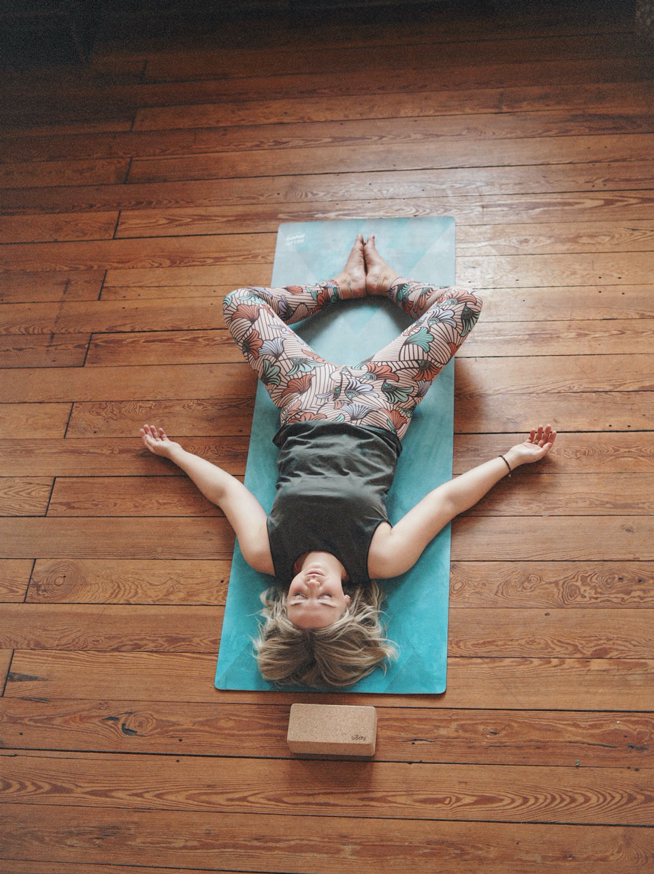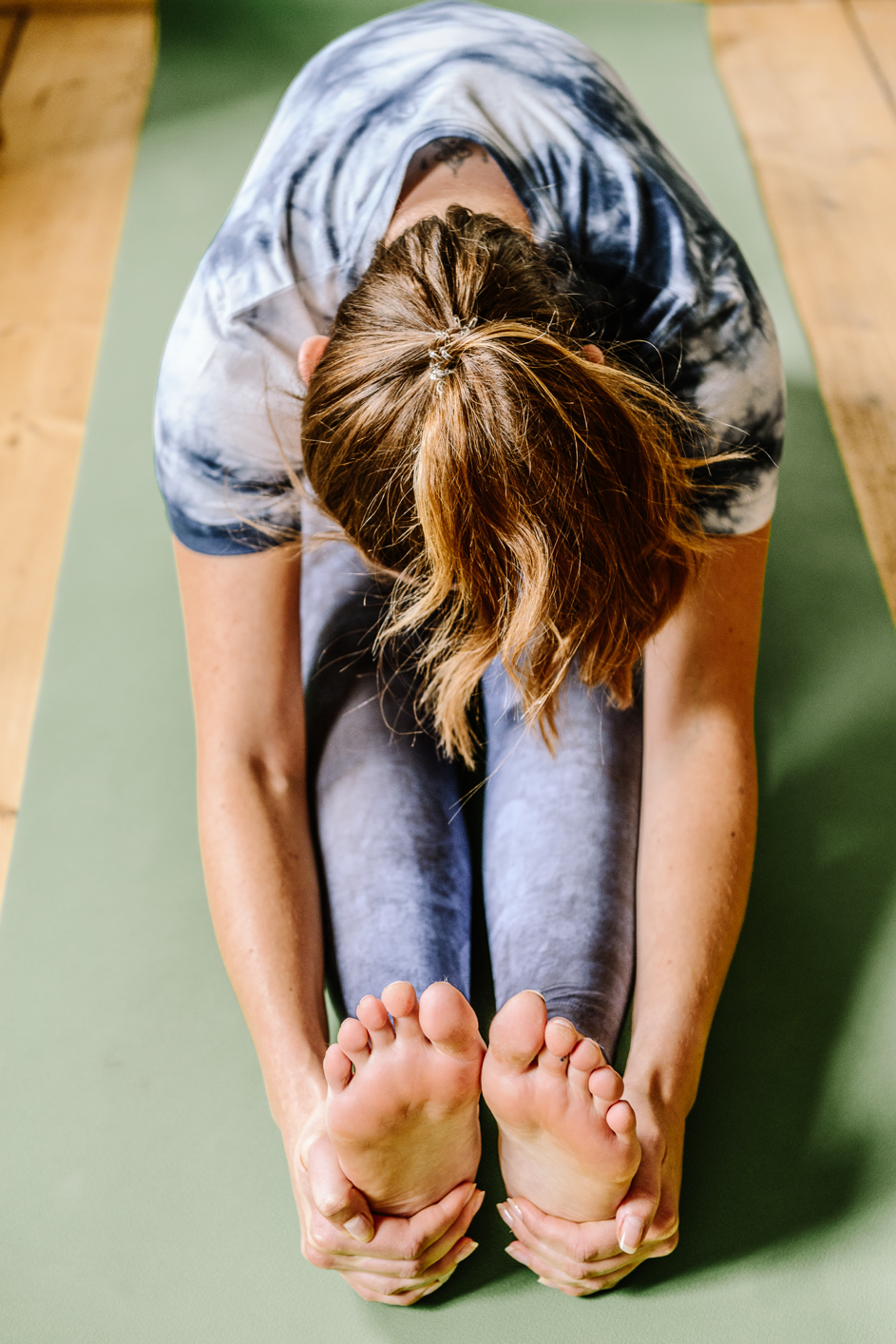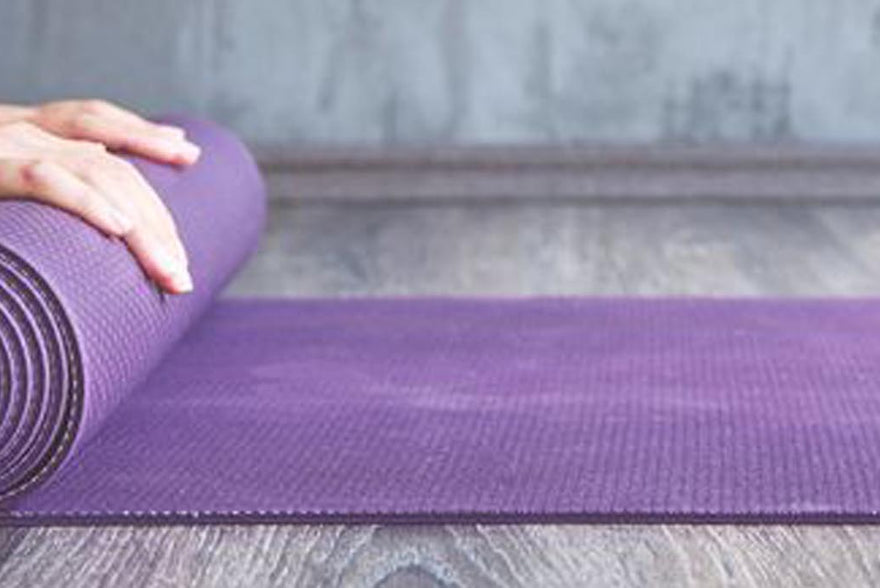Yoga stands for centering, balance and mindfulness. The right equipment plays an important role in ensuring that you can concentrate on your exercises and not be distracted. While you are already in the right place for the perfect yoga clothing, our online shop, we will explain to you in this article what you should pay attention to when buying your yoga mat:
The perfect yoga mat: the most important purchasing criteria
Many studios offer yoga mats for their students. However, if you would prefer to use your own mat and practice yoga at home, we will give you some tips here that can be particularly useful when buying your own yoga mat. In addition to the design, which is probably the first thing you notice as a buyer, these factors play an important role:
- Price
Yoga is booming and this is also reflected in the growing range of yoga studios, clothing and accessories. No matter how tempting the offers may be, it is definitely worth investing a little more when it comes to clothing and mats. Cheap mats often contain dangerous and harmful ingredients and are therefore not always recommended. In the Material section you can find out more about which ingredients are particularly questionable.
According to the yoga mat guide, there are the following 3 price categories
15-35 €: The entry-level model
Yoga mats in this price range are usually made of petroleum-based PVC, as it is relatively cheap to process. When purchasing, pay attention to the pollutant test with the Oeko-Tex® Standard 100. The yoga mat should be made without AZO (solvents) and DOP (benzenes in the plasticizer) and free of phthalates and heavy metals. When buying a cheap mat, you should also keep in mind that it will wear out after a year, even for occasional yogis.
35-70 €: The good investment
In this price range you will find yoga mats that have good density and abrasion resistance. This means you can expect a longer service life, even with heavy use. The materials range from PVC, PER and natural fibers such as natural rubber, jute or hemp. The virgin wool yoga mats for quieter yoga and the lightweight travel mats are also available at this price. As a vegan label, we completely advise against purchasing animal products.
80-200 €: The luxury and pro variant
In this price segment you will find yoga mats that are particularly long, particularly dense and very durable. Manufacturers of these mats often offer a lifetime guarantee on the products.
Photo by Madlen Boheme
- Slip resistance
Anyone who has ever tried yoga on a towel or blanket will quickly have noticed how important the slip resistance of the surface is for the correct execution of the exercises. To ensure that you have a firm footing on your yoga mat, you should make sure that it is tight enough. Slightly harder mats made of natural rubber or jute usually perform particularly well in terms of slip resistance. However, general statements are difficult here because the surface and your own weight also play a role. If possible, try the mat in the store before buying it.
- Good cushioning and density
Active and dynamic yoga exercises demand a lot from our joints. In order for us to continue to enjoy it, it is particularly important that the yoga mat has good cushioning and density. The yoga mat guide recommends a 5 mm thickness for Asthanga Yoga.
Remember: the denser the mat, the more cushioning it offers, but it also becomes heavier. When transporting the mat, you should choose a model that you can carry easily. 2 kg with a 2-4 mm density is a good average here.
- The right length and width
Your yoga mat is the right length if you can lie stretched out with your head and feet on it.

- material
The list of materials for yoga mats ranges from PVC, natural rubber, organic cotton, flax, natural latex, to virgin wool and recycled fibers. Anyone who researches the internet before buying a yoga mat will quickly come across alarming reports about dangerous and harmful ingredients in them. Last year, 50% of all yoga mats were classified as questionable by Öko Test. Not only did many PVC models perform poorly, but also some yoga mats made of natural rubber or natural latex. The naturalness of the material does not guarantee 100 percent safety when it comes to its potential danger.
When purchasing, pay attention to the Oeko-Tex 100 seal, which recognizes mats that have been tested for toxins. And look for manufacturers who are transparent about their processes and materials when producing yoga mats.
The following ingredients should set your alarm bells ringing:
- Nitrosamines: Suspected of being carcinogenic
- Plasticizers (e.g. phthalates): Are suspected of being carcinogenic and affect the hormonal balance
- AZP/AZO dyes: are suspected of causing allergies and diseases such as ADHD
TIP:
With this app from the Federal Environment Agency you can easily find out whether a particular product contains dangerous pollutants. By scanning the barcode, information is requested from the retailer. This is legally obliged to provide information about carcinogenic, mutagenic, reproductively toxic and particularly environmentally harmful substances from a concentration of 0.1 percent.
Good plastic mats :
Öko Test has rated all plastic mats with modern, foamed thermoplastic elastomers (TPE) as “very good”. In contrast to other plastic materials, such as PVC (polyvinyl chloride), TPE does not need any controversial plasticizers to ensure a smooth consistency. The foamed plastic is already elastic enough.
Good mats made from natural materials :
The advantage of natural materials such as rubber or flax is their biodegradability. They are also not based on crude oil like many of the plastic mats. However, when purchasing, pay attention to where and how the mats were made. The bluesign certificate ensures the highest level of fair, ecological and sustainable production for yoga mats.
Now it's time to get on the mats, get ready, go!
If you're still missing the right outfit for your mat, then take a look at our online shop . A large selection of sustainable and fairly produced yoga and sports clothing for women and men is waiting for you here.


